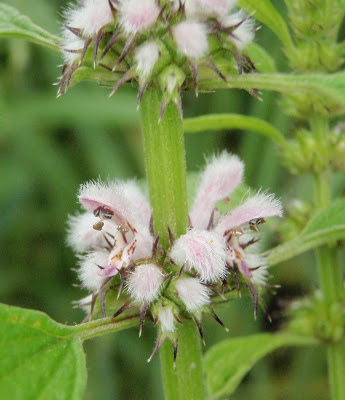Emerald Ash Borer
Field Trip, 6/25, Vorheees, NY.
Photo shows Trish Hanson, VT State Entomologist,
using a
drawknife to strip ash bark and uncover evidence of Emerald Ash Borer in an
active infestation. At lower right is serpentine track of Ash Borer, a diagnostic. At left in photo is Jim Esden, a forester
with FP&R and instructor at several forest pest workshops sponsored by the
Dummerston Conservation Commission. At right is Mark Whitmore, Forest
Entomologist at Cornell University and a walking encyclopedia of information on
EAB.
Stepping off the bus at the infestation site, the ash borer
announced its presence with a flying adult smacking into the face of an
FP&R staffer.
Whitmore said all the trees we saw at the site will be dead
at this time next year.

For more information on the ash borer, visit
vtinvasives.org. Here is url to a recent article on EAB I wrote for the Spring
2013 issue of the Vermont Coverts: Woodlands for Wildlife newsletter, http://vtcoverts.org/newsletters.php.



















































